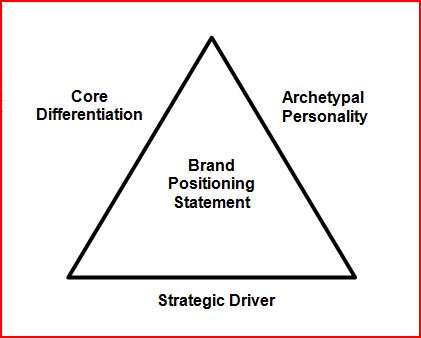The Brand Triangle defines the customer-centered parameters for determining the Brand Positioning Statement. Those parameters are:
Core Differentiation – Within a competitive context (real and perceived, product- and values-based), the challenge for any organization is understanding what it is about its offering that will distinguish it from the competition in terms of its ulterior value (benefit minus price). What, atthe core of your offering, is believable, motivating and unique? And in particular,what doe your organization by “customer” andby “competition.”
 Strategic Driver – What is the single dominant driver behind the way your organization operates? Determining the correct organizational driver is essential to determining the correct strategic advantage that your brand should strive to leverageat every point of “customer” contact. Strategic Driver – What is the single dominant driver behind the way your organization operates? Determining the correct organizational driver is essential to determining the correct strategic advantage that your brand should strive to leverageat every point of “customer” contact.
Archetypal Personality – What is the personality archetype that your brand should align with? Consistently adhering to that personality in terms of the tone of all messages to the marketplace is essential to creating a stable, recognizable marketplace presence that allows all your customers (internal as well as external) to connect emotionally with the perceived values of yourbrand.
Brand Positioning Statement – Lies at the center of the Brand Triangle and marks the culminationof the Brand Triangle process. It is a definition of what your brand stands for and what that means to your target audience. It differs from a “mission statement,” which is internally directed. The Brand Positioning Statement is clearly externally directed, speaking about and to the customer (though the customer never sees it). It is focused on the customer’s needs and values and how the experience of your brand connects to those needs and values, tactically as well as emotionally.
Return to brand strategy page.
Carroll Conklin | 614-402-5371 | info@carrollconklin.com
| 